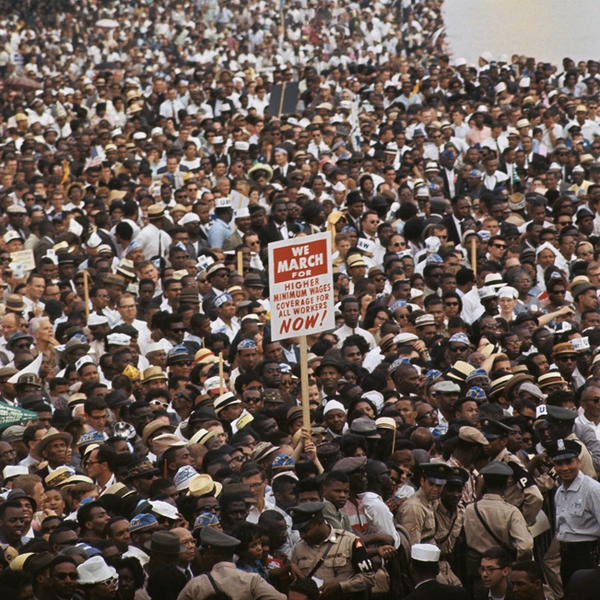

Invisible Man Retreat, Harlem, New York, 1952
Invisible Man by Ralph Ellison represents a watershed in the canon of American fiction. Winner of the National Book Award in 1953, the novel has been hailed as one of the first to treat the black experience in twentieth-century America as a full human experience. Soon after its publication, Parks set out to evoke passages from the novel by shooting a series of images of an actor on the streets of Harlem, where Ellison had lived for more than a decade.
“I live rent-free in a building rented strictly to whites, in a section of the basement that was shut off and forgotten during the nineteenth century,” the narrator of Invisible Man tells readers, and the most memorable photograph from the series shows Parks’ actor mimicking the symbolic condition of living underground. Parks set his camera nearly flat on the pavement to frame the man’s head as he peers out from a manhole. Annotated test prints reveal Parks’ working method and his technical expertise; he decided to strongly burn in the top and bottom of a cropped frame, and give part of the emerging man’s face and the air above him an expressive glow.
Parks also re-created a passage from the novel in which the narrator’s hole in the ground is illuminated with 1,369 lights. “I doubt if there is a brighter spot in all New York than this hole of mine,” the narrator claims, “and I do not exclude Broadway.” In a composite print, Parks conjures this juxtaposition of light and dark by combining a night vista of the city with a reconstruction of the uniquely illuminated room described in the novel. Such staging testifies not only to the book’s deep impression on him, but also to Parks’ expanding vision and invention around this time. The following year, he would compose his first piano concerto, and his efforts to craft narrative would flourish soon after in the realm of film.
Emerging Man, Harlem, New York, 1952
Untitled, Harlem, New York, 1952
Invisible Man Retreat, Harlem, New York, 1952
Brotherhood Sacrifice, Harlem, New York, 1952
Soapbox Orator, Harlem, New York, 1952
Indian Herb Store, Harlem, New York, 1952
Harlem Neighborhood, Harlem, New York, 1952



